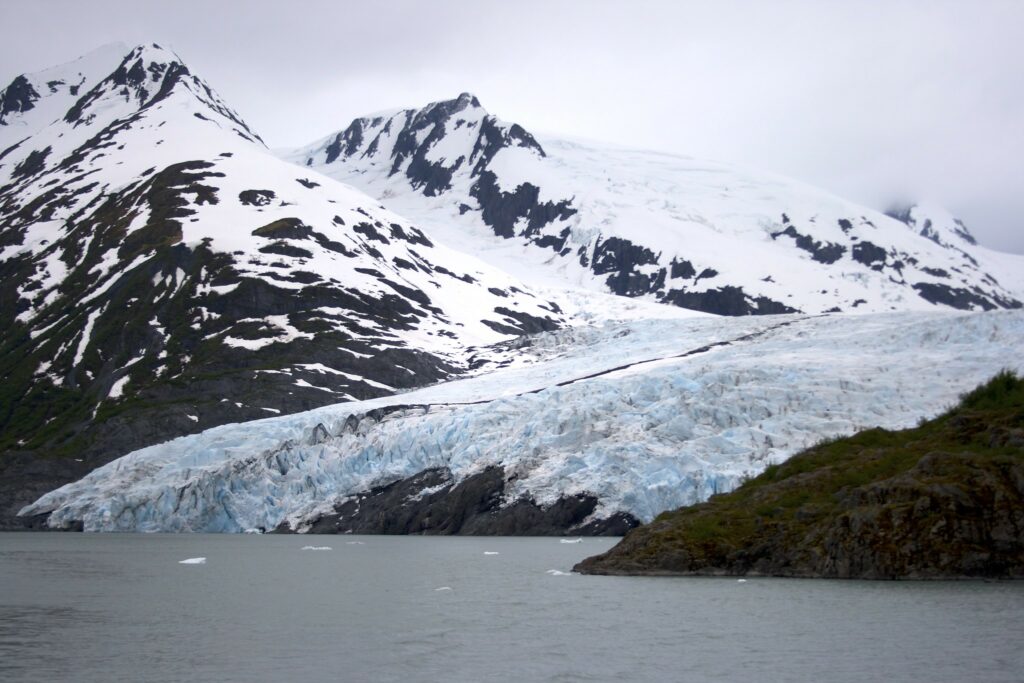Global warming is melting the planet’s ice. Greenland is losing ice mass at record rates and parts of Antarctica have entered a phase of instability. But that’s more than just a problem in itself — it can trigger a whole new range of problems, a new study reports.

The dark side of ice melt
It’s easy to forget that climate change isn’t just one phenomenon — it’s a massive chain of interlinked phenomena that affect and influence each other. So when we’re talking about something like polar ice melt, doesn’t end with just that, it triggers a chain of other events.
In a new study, a team of scientists from the Potsdam Institute for Climate Change Research in Germany analyzed how rising temperature and ice melt feed off other.
“If global ice masses shrink, this changes how much of the sunlight that hits Earth’s surface is reflected back into space. Decreasing ice cover in the Arctic exposes more of the darker ocean water that absorbs more energy,” said in a statement Nico Wunderling, lead author of the study.
According to the findings, without changes in the levels of carbon dioxide, massive melting of the cryosphere (global ice) would raise temperatures by 0.43ºC — that’s the global average, in icy regions, it would be substantially higher. Thus, in Greenland and West Antarctica, the thermometer would rise up to 5ºC. Meanwhile, around the equator, it would barely register an extra 0.2ºC.
These differences are due to thermal amplification that causes warming in icy parts of the planet. The higher the temperature, the lower the amount of frozen mass. The process is fed back by the disturbance that heating introduces to other components of the system.
The most notable change would be for the so-called albedo effect — the ability of surfaces to bounce off sunlight. The more light surfaces reflect, the less heat they absorb, and snow and ice are excellent reflectors, returning most of the light and heat they receive back to space. But when ice disappears, the rebound diminishes. This process is especially important in the Arctic.
At first glance, the process is straightforward: ice retreats, it leaves behind darker surfaces, so there’s less light reflected and more heat trapped in the system. But there’s an important subtlety which makes that an oversimplification — when ice retreats, surfaces could still be covered by a layer of snow which wouldn’t change much albedo-wise. So researchers had to model this phenomenon, and only then could they confirm that retreating ice will affect the planet’s albedo significantly.
Other altered factors are the temperature in the atmospheric column, the formation of clouds, and the presence of water vapor. Warmer air can hold more water vapor, and water vapor increases the greenhouse effect, another feedback loop amplified by climate change.
“This is not a short-term risk. Earth’s ice masses are huge, which makes them very important for the system as a whole. But even if some of the changes might take hundreds or thousands of years to manifest, it’s possible we trigger them within just a couple of decades,” said in a statement Ricarda Winkelmann, who leads the research group.
Many researchers argue that in those few decades, the Arctic will become completely ice-free during the summer. If so, in addition to the local and global ecological consequences, the temperature will rise 1.5ºC in the Arctic region and 0.19ºC on a global scale, researchers estimate. This local increase in the Arctic will again reduce the albedo, generate even more melting in the land covered by the ice of Siberia, Canada, or Greenland, which will lower albedo even more, feeding back the warming and starting over. It’s quite a vicious cycle that we could do well without.
From the late 1970s to the mid-2000s, Arctic summer sea ice area has declined by more than 10% per decade. If this trend continues, the Arctic could become ice-free in summer for the first time within the 21st century. At the same time, mountain glaciers world-wide have retreated, losing 21% of their volume between 1901 and 2009.
Moreover, both the West Antarctic and the Greenland Ice Sheet have lost mass at an accelerating pace in the past decades. As global warming progresses, ice loss from the polar ice sheets and subsequent sea-level rise is expected to further increase. Beyond a temperature threshold, large parts of the Greenland Ice Sheet might melt.
The study was published in the journal Nature Communications.


